A brief explanation of the Three Hares symbol
As I am exhibiting at the Wytches' Market in Glastonbury this Saturday (29th Sept), I thought I would explore the Three Hares symbol for this week's blog.
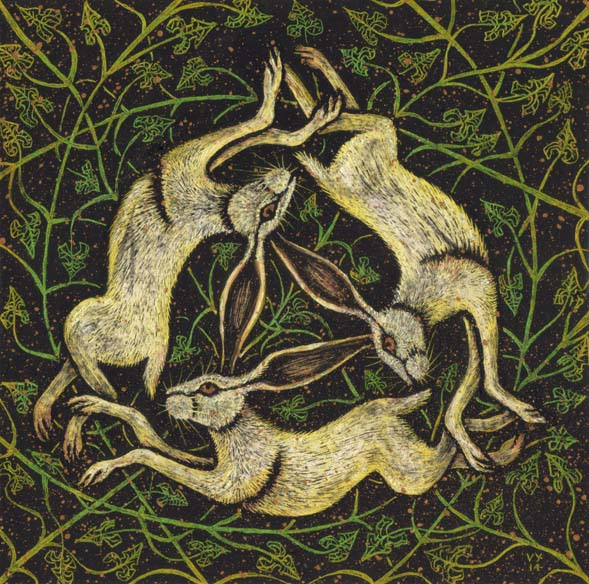
'Hare Trio'
The 3 hares are interlocked in a circle in threefold rotational symmetry and each of the ears are shared by 2 hares, so that only 3 ears are shown.
It isn't an easy subject to research, as most of the stories explaining the symbology are largely speculative; there have been many attempts to find the meaning behind the 3 hares, but there exists no record to explain the original examples.
I can however start with historical and geographical facts. The symbol appears in sacred sites from the Middle and Far East, to the churches of Devon (known locally as 'Tinners' Rabbits')
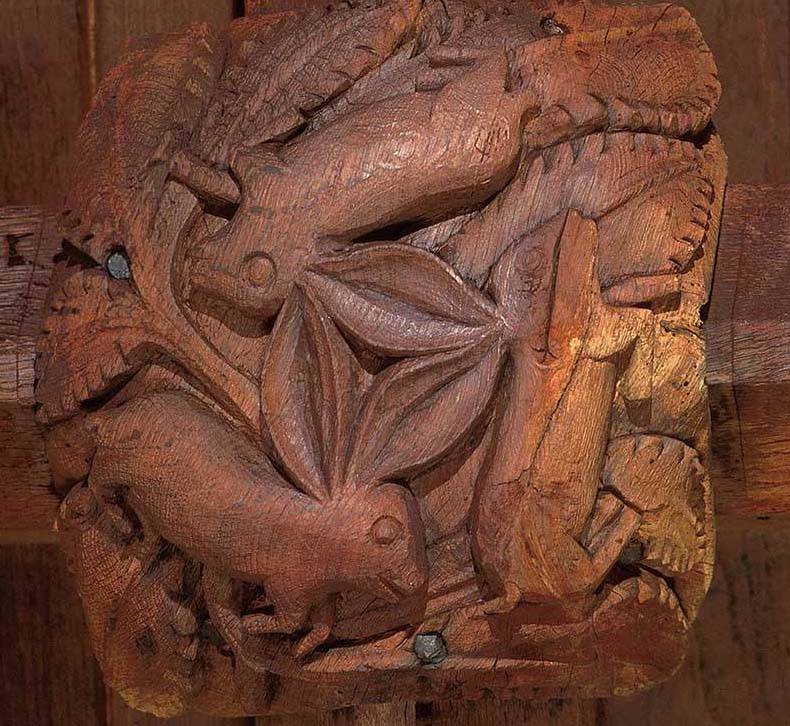
'Tinners' Rabbits' in Devon
and throughout Europe. This encompasses diverse religions and cultures, including Buddhism, Islam, Celtic, Pagan, Christianity and Judaism.
The oldest examples of the 3 hares (or rabbits) have been found in cave temples in China, dating from the 6th and 7th centuries. Rabbits are seen as good luck signs in China, representing peace and tranquility.
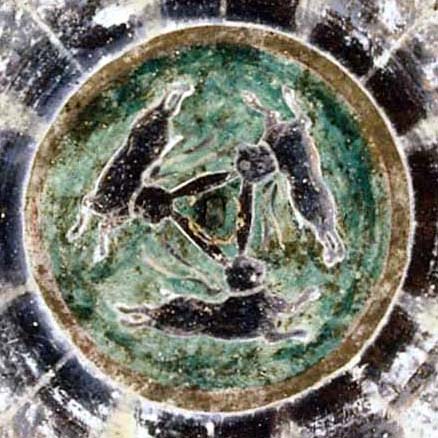
Mogao cave, China
After this in the 13th and 14th centuries, the symbol migrated along the Silk Road and it is easy to assume that the image arrived in Europe and England in this fashion; however, there are inconsistencies in dates and places, suggesting that the symbol developed independently.
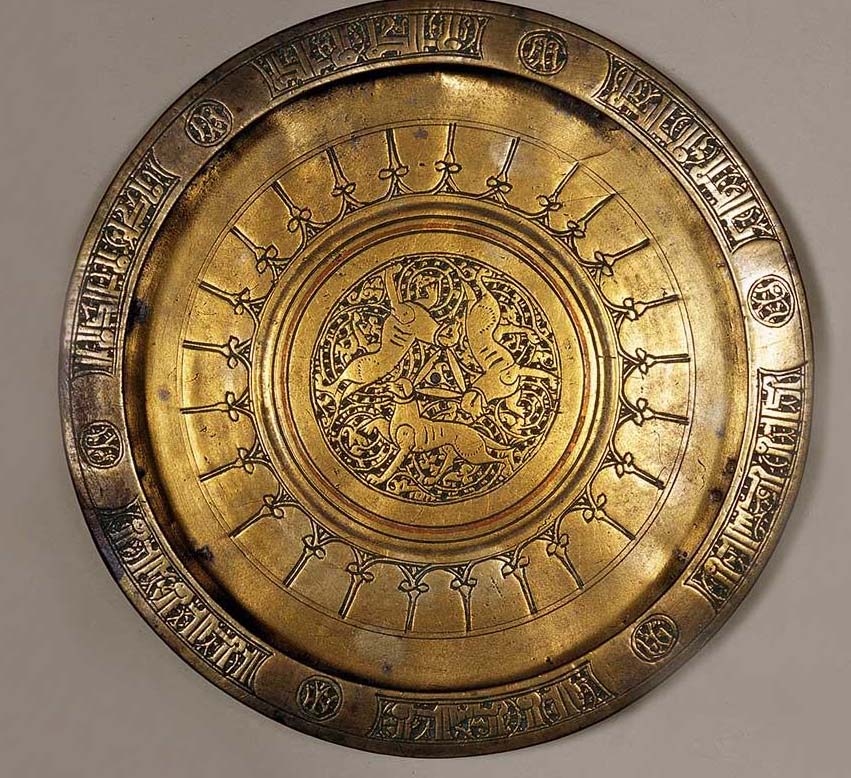
Iranian tray
The 3 hares are widely associated with Christianity, representing the Holy Trinity (father, son and holy spirit) and in Judaism they are commonly found in synagogues (particularly in Germany).
Alongside this it has been used as a Pagan symbol with mystical associations with fertility, the lunar cycle and the Goddess of nature.
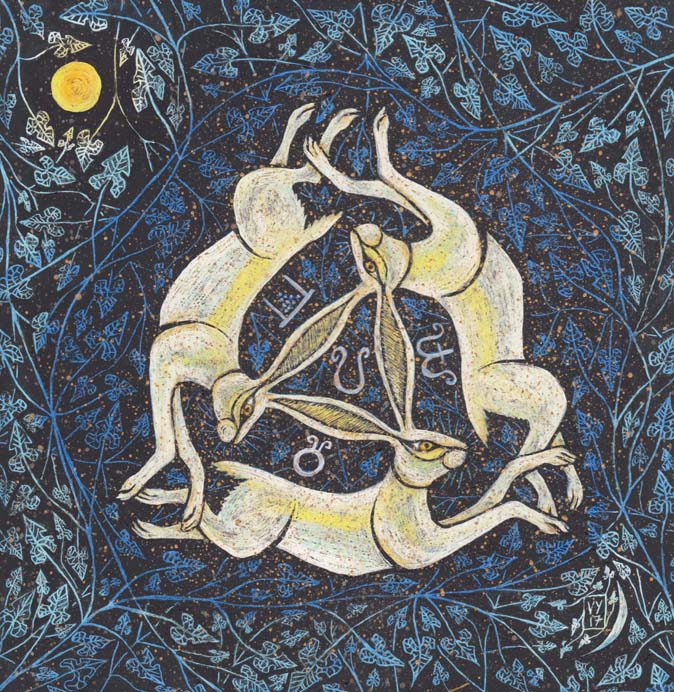
'Nature's Eye', illustration of the poem by Pagan poet Mark Westmore
As the symbol has striking similarities to the Triquetra, a symmetrical design of 3 interlaced arcs (literal translation '3 cornered'), we can make some symbolic connections; but even the Triquetra has diverse interpretations depending on belief systems and geography.
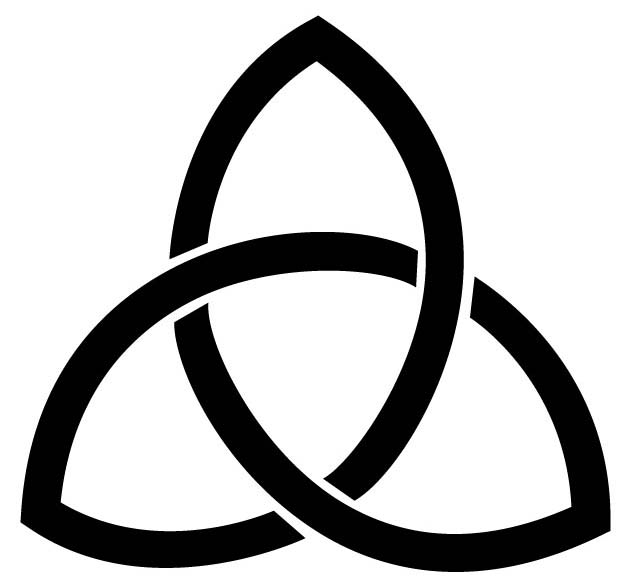
It is widely used as a decorative pattern in Celtic metalwork and stonework (eg Celtic crosses) and found in the Book of Kells and other illuminated manuscripts.
Some examples of the trifold meanings of the Triquetra are:
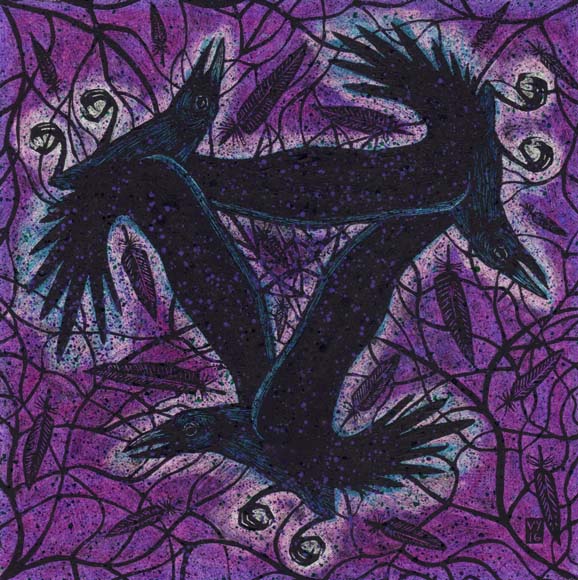
'Celtic Crows' experiment
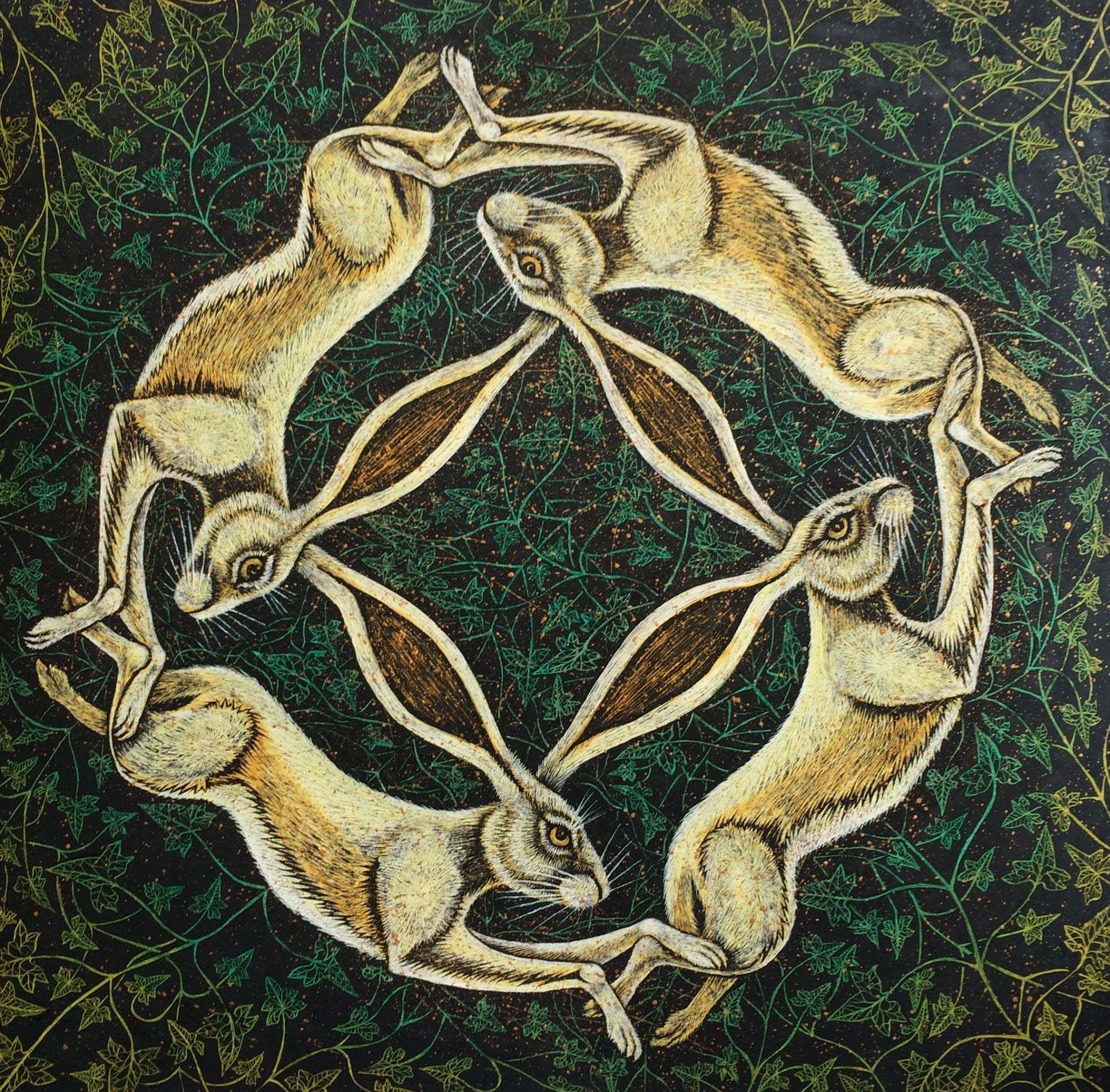
'Elemental' using 4 hares (the idea behind this is the balance between the elements earth, fire, air and water).

'Hare Trio'
The 3 hares are interlocked in a circle in threefold rotational symmetry and each of the ears are shared by 2 hares, so that only 3 ears are shown.
It isn't an easy subject to research, as most of the stories explaining the symbology are largely speculative; there have been many attempts to find the meaning behind the 3 hares, but there exists no record to explain the original examples.
I can however start with historical and geographical facts. The symbol appears in sacred sites from the Middle and Far East, to the churches of Devon (known locally as 'Tinners' Rabbits')

'Tinners' Rabbits' in Devon
and throughout Europe. This encompasses diverse religions and cultures, including Buddhism, Islam, Celtic, Pagan, Christianity and Judaism.
The oldest examples of the 3 hares (or rabbits) have been found in cave temples in China, dating from the 6th and 7th centuries. Rabbits are seen as good luck signs in China, representing peace and tranquility.

Mogao cave, China
After this in the 13th and 14th centuries, the symbol migrated along the Silk Road and it is easy to assume that the image arrived in Europe and England in this fashion; however, there are inconsistencies in dates and places, suggesting that the symbol developed independently.

Iranian tray
The 3 hares are widely associated with Christianity, representing the Holy Trinity (father, son and holy spirit) and in Judaism they are commonly found in synagogues (particularly in Germany).
Alongside this it has been used as a Pagan symbol with mystical associations with fertility, the lunar cycle and the Goddess of nature.

'Nature's Eye', illustration of the poem by Pagan poet Mark Westmore
As the symbol has striking similarities to the Triquetra, a symmetrical design of 3 interlaced arcs (literal translation '3 cornered'), we can make some symbolic connections; but even the Triquetra has diverse interpretations depending on belief systems and geography.

It is widely used as a decorative pattern in Celtic metalwork and stonework (eg Celtic crosses) and found in the Book of Kells and other illuminated manuscripts.
Some examples of the trifold meanings of the Triquetra are:
Land, sea, sky (Celtic)
The triple Goddess, maiden, mother, crone (Pagan)
The infinite circle of life, death, rebirth (various)Mind, body, soul (various)
Holy Trinity, father, son, holy spirit (Christianity) often depicted using the fish symbol"Three hares sharing three ears,
Yet every one of them has two."
Yet every one of them has two."
ancient German riddle

'Celtic Crows' experiment

'Elemental' using 4 hares (the idea behind this is the balance between the elements earth, fire, air and water).